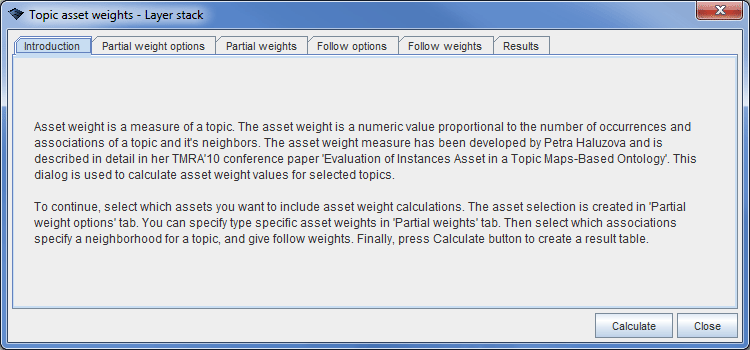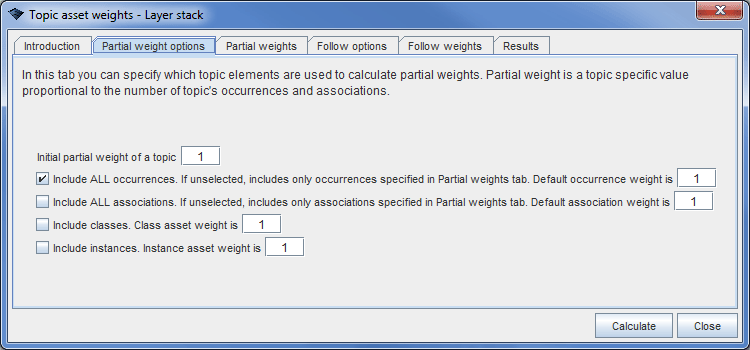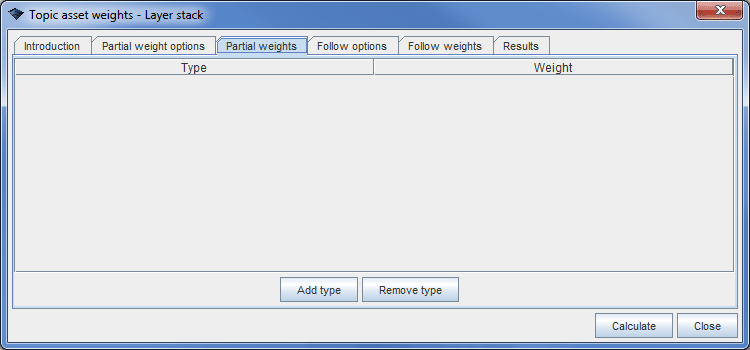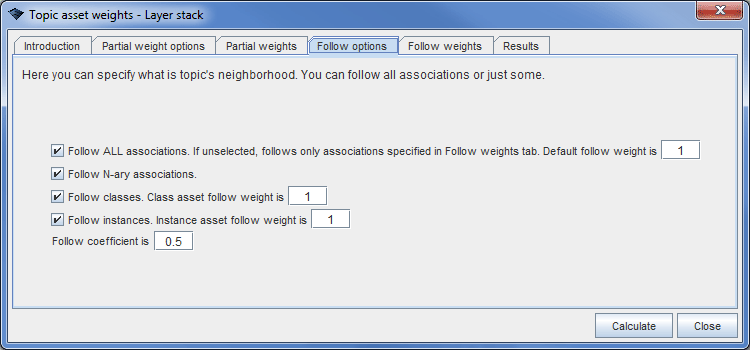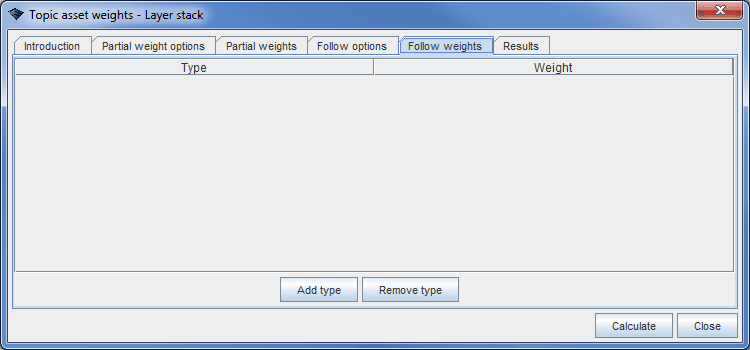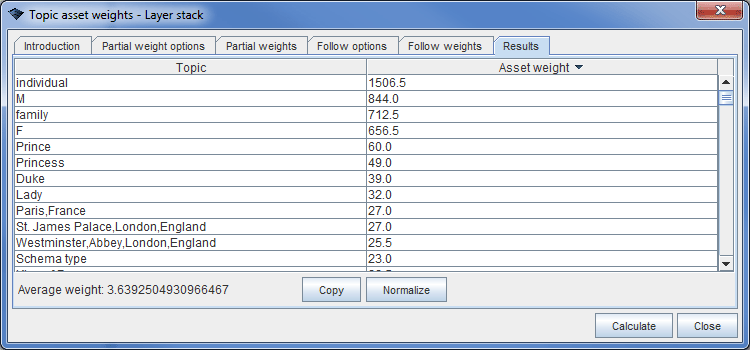Asset weight of a topic
(→Partial weight options) |
(→Partial weights) |
||
| Line 42: | Line 42: | ||
In this tab user can define topic and weight pairs. Topics represent occurrence and association types. Weight is a floating point number representing weight of occurrence and association type. When ever a topic contains occurrence or association of given type, it's partial weight is not default occurrence weight nor default association weight but a given weight. | In this tab user can define topic and weight pairs. Topics represent occurrence and association types. Weight is a floating point number representing weight of occurrence and association type. When ever a topic contains occurrence or association of given type, it's partial weight is not default occurrence weight nor default association weight but a given weight. | ||
| − | + | By default the partial weights table is empty. | |
| + | [[Image:asset_weights_b03.gif|center]] | ||
=== Follow options === | === Follow options === | ||
Revision as of 13:32, 17 November 2010
Asset weight is a measure of a topic. It is proportional to a number of occurrences and associations of the topic and topic's immediate neighbors. Asset weight measure has been developed by Petra Haluzová of Department of Informatics and Telecommunication, Czech Technical University, Prague. Asset weight measure is described in detail in her TMRA'10 conference paper Evaluation of Instances Asset in a Topic Maps Ontology.
Wandora has a feature that is used to calculate asset weight either for an entire layer stack, for a selected layer or for current topic selection. Feature target is selected implicitly by the context in which the feature is started. Wandora user can open asset weight dialog window by selecting top menu option Layers > Statistics > Asset weights..., layer context menu option Statistics > Asset weights..., and topic selection context menu option Topics > Statistics > Asset weights....
Contents |
Asset weights dialog window
Starting the asset weight feature Wandora opens a dialog window with six tabs
- Introduction
- Partial weight options
- Partial weights
- Follow options
- Follow weights
- Results
Next chapters describe the options and functions of each tab.
Introduction
This tab is a short introduction to the asset weight feature. Tab has no special functions.
Partial weight options
This tab is used to select which topic elements are used to calculate partial weights and which are default weight values. This tab has options:
- Initial partial weight of a topic is a base weight every topic gets regardless it's occurrences, associations or other elements. By default initial partial weight is 1.
- Include ALL occurrences option is used to decide whether or not Wandora should count all occurrences in partial weight. If selected, every occurrence a topic carries is included in calculations. If unselected, only occurrences of types defined in Partial weights tab are included in calculations. Default occurrence weight value is 1. User can change the default occurrence weight value by modifying the number in a text field.
- Include ALL associations option is used to decide whether or not Wandora should count all associations in topic's partial weight. If selected, every association a topic plays a role is included in calculations. If unselected, only associations of types defined in Partial weights tab are included in calculations. Default association weight value is 1.
- Include classes option includes all classes of a topic to it's partial weight. Weight of a class is set in the text field beside the check box. By default class asset weight is 1.
- Include instances option includes all instances of a topic to it's partial weight. Weight of an instance is set in the text field beside the check box. By default instance asset weight is 1.
User should note that the original paper of Petra Haluzova counts occurrences only in partial weight of a topic. As Wandora's topic map model allows only one occurrence per type and scope it was necessary to extend the partial weight calculations to include associations, instances, and classes.
Partial weights
In this tab user can define topic and weight pairs. Topics represent occurrence and association types. Weight is a floating point number representing weight of occurrence and association type. When ever a topic contains occurrence or association of given type, it's partial weight is not default occurrence weight nor default association weight but a given weight.
By default the partial weights table is empty.
Follow options
Here user can select what is topic's neighborhood.
Follow weights
In this tab user can define topic and weight pairs. Similarly to Partial weights tab, a topic represents here occurrence and association type. Weight is a floating point number representing follow weight of the type.
Results
When user press the Calculate button, Results tab is selected automatically, Wandora calculates asset weights for all topics and fills the result table.
